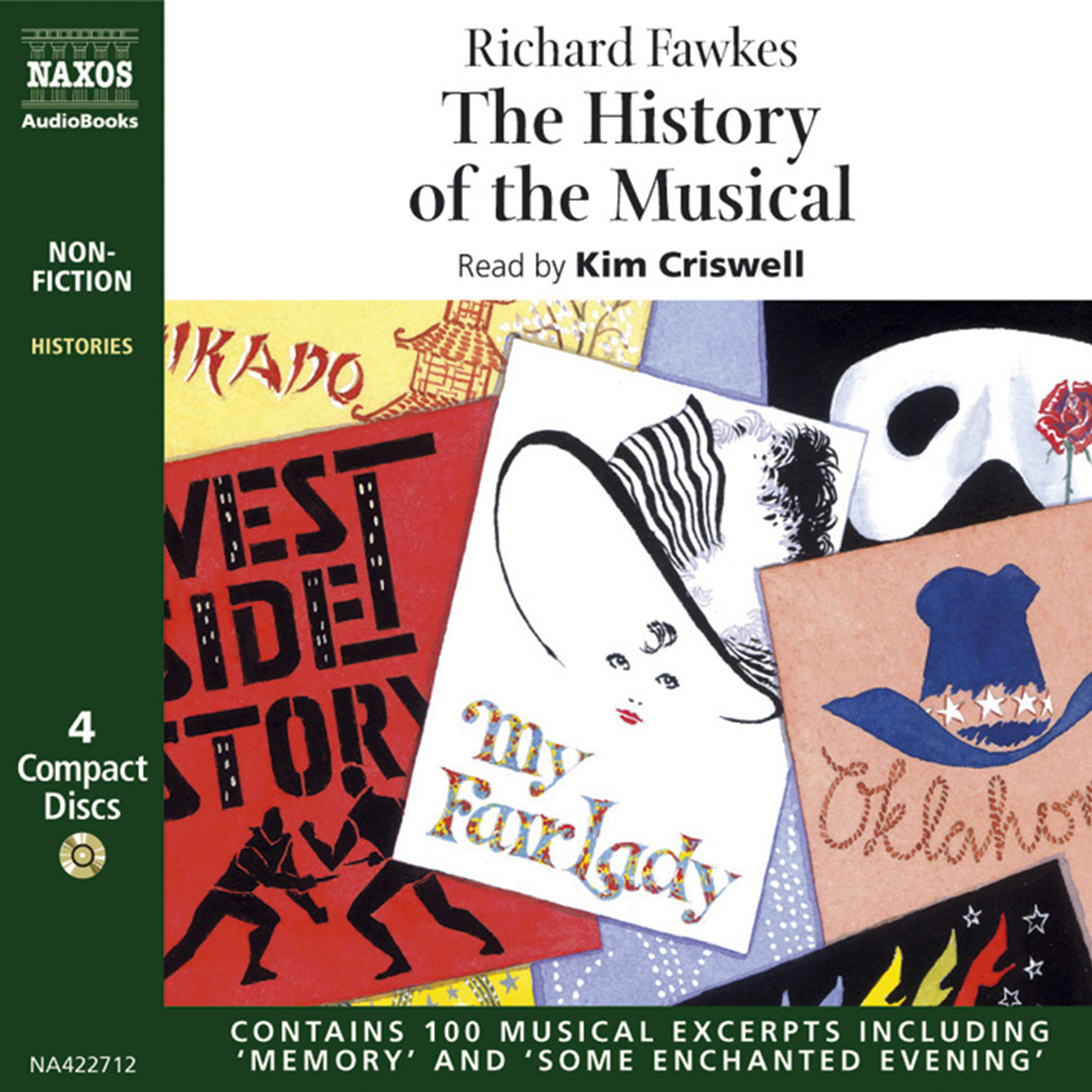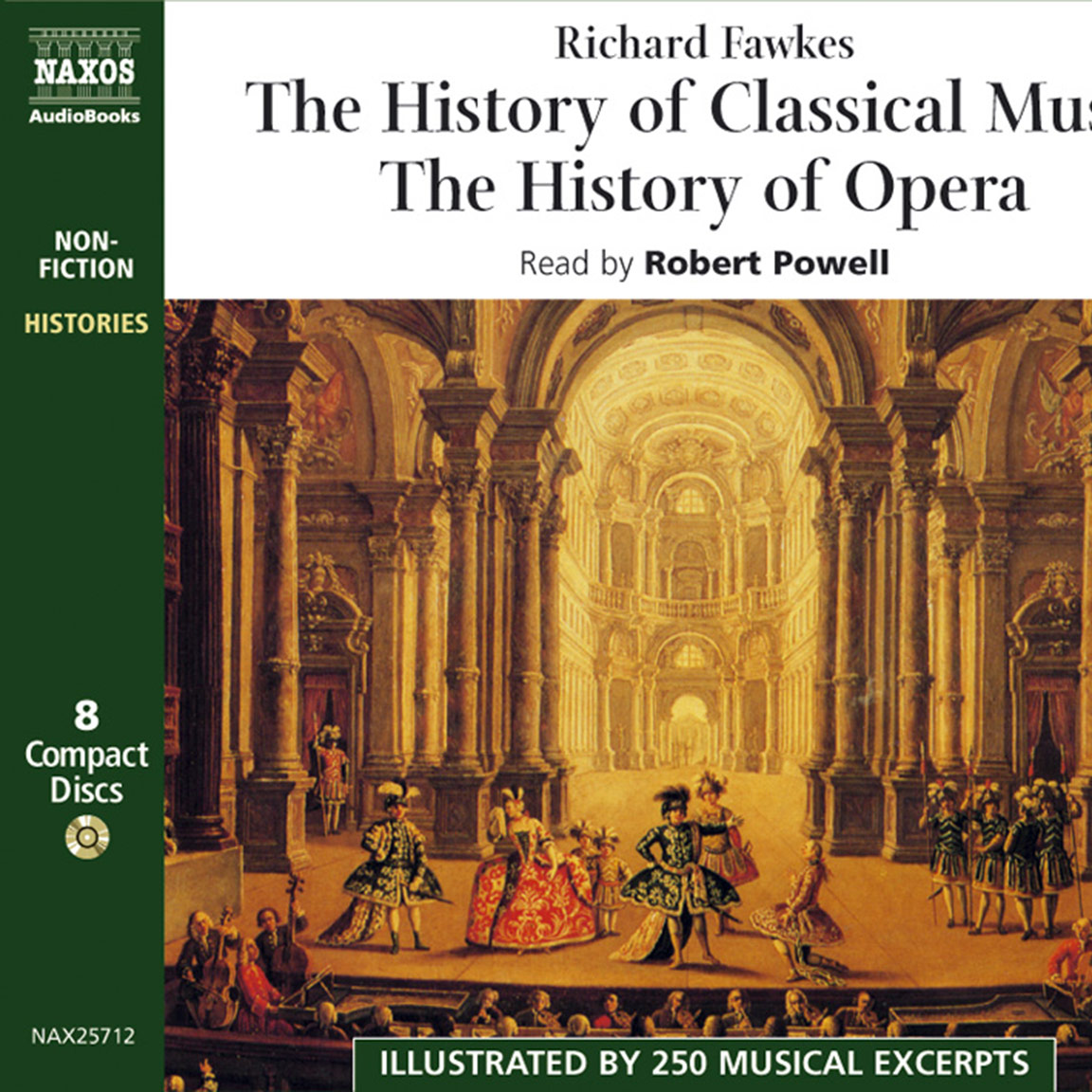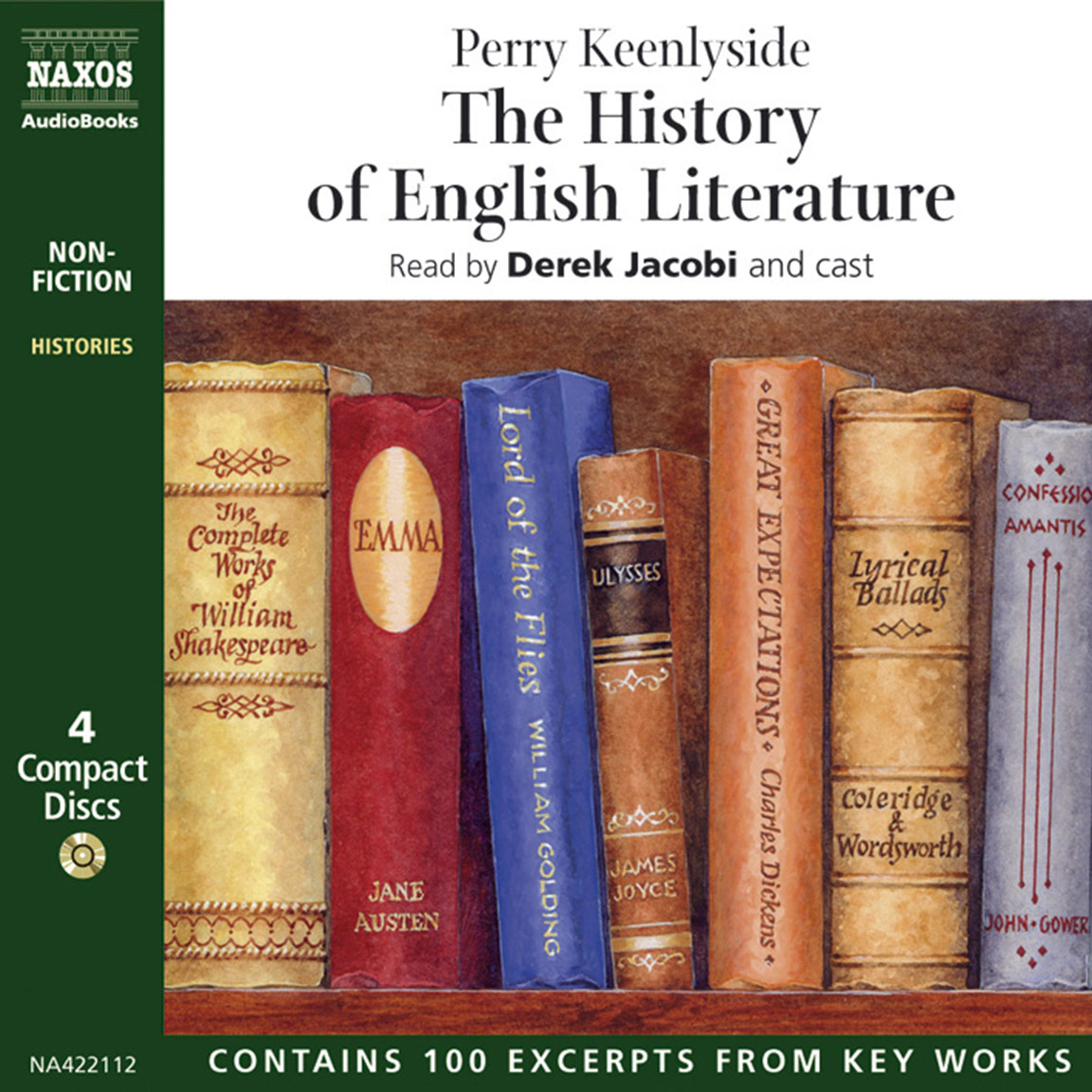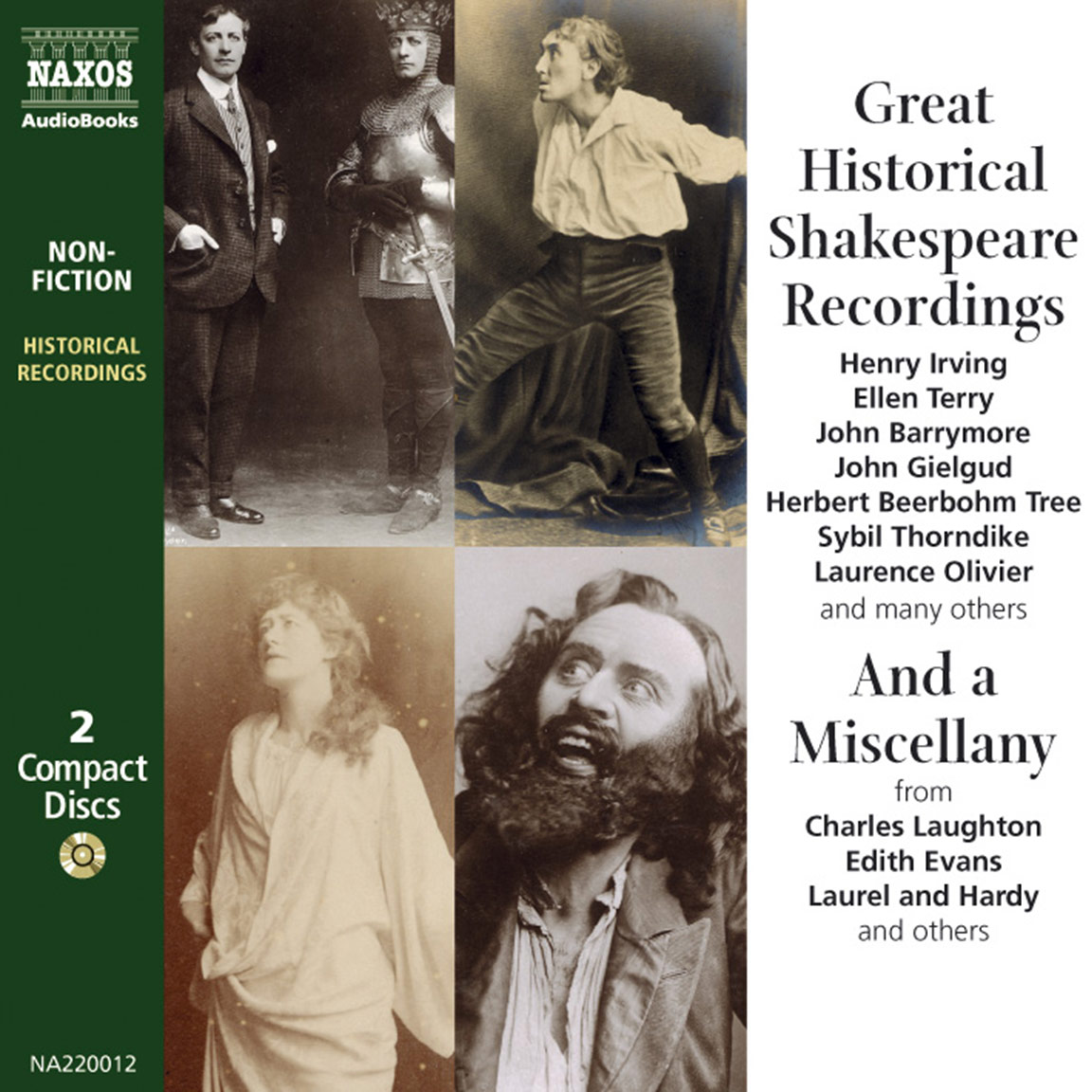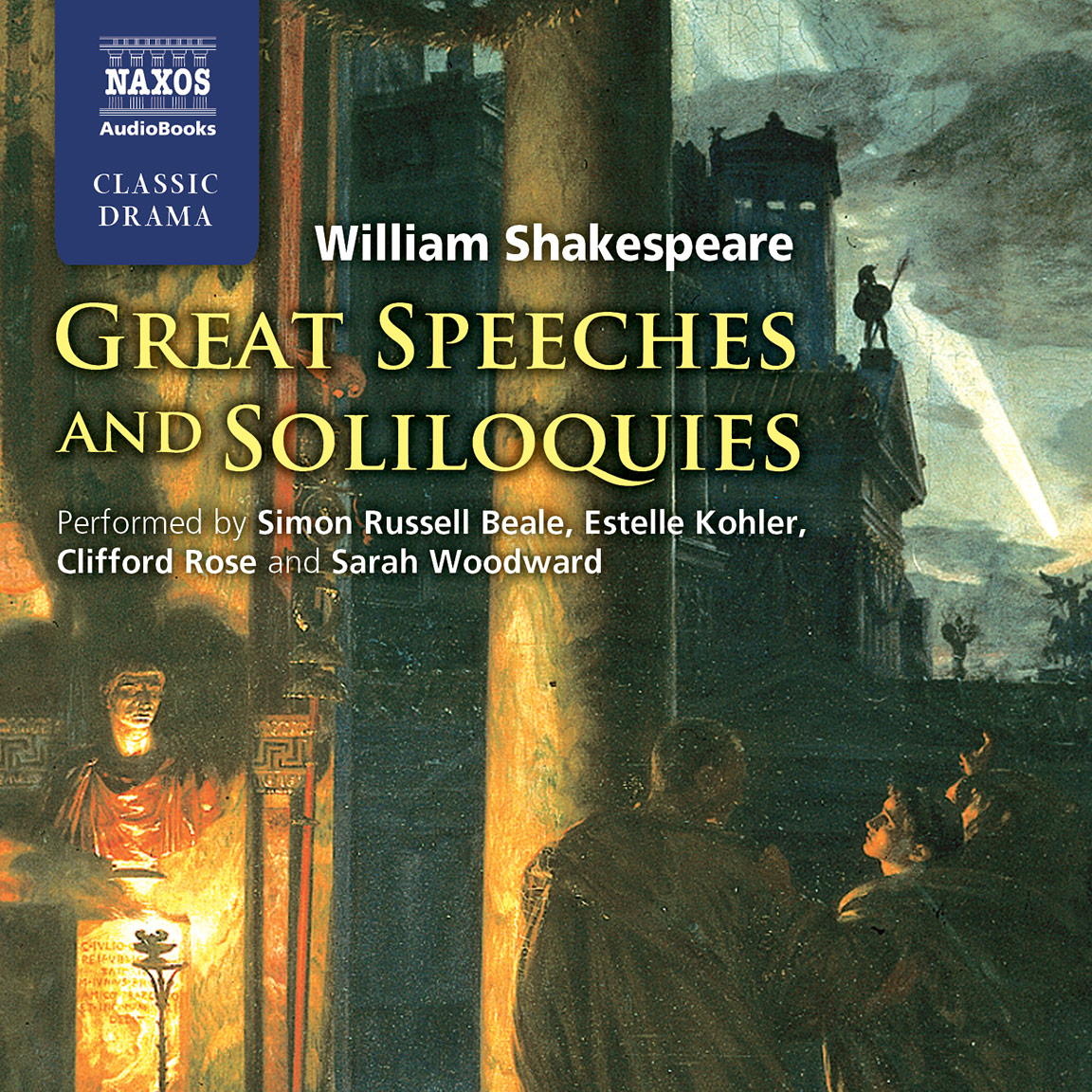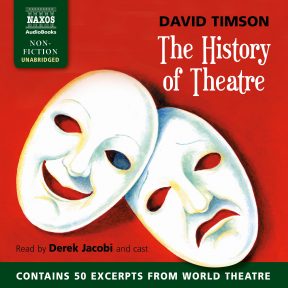
Audio Sample
David Timson
The History of Theatre
Read by Derek Jacobi, Carole Boyd, John McAndrew, Teresa Gallagher & Caroline Faber
unabridged
This bold undertaking covers Western theatre from ancient Greece to the present day. It traces the development of dramatic art through the miracle plays, the great Shakespearean period, Molière and Racine in France, Goethe in Germany, through the nineteenth century and the main movements in the twentieth century. It is illustrated by numerous examples of differing styles, with some historical recordings as well and excerpts from nearly fifty plays – a fascinating journey. It is written by David Timson, the British actor and director who features extensively on Naxos AudioBooks in both roles.


-
Running Time: 5 h 09 m
More product details
Digital ISBN: 978-962-954-721-9 Cat. no.: NA419912 Download size: 144 MB Produced by: Nicolas Soames Edited by: Sarah Butcher and Simon Weir BISAC: LIT013000 Released: July 2005 -
Listen to this title at Audible.com↗Buy on CD at Downpour.com↗Listen to this title at the Naxos Spoken Word Library↗
Due to copyright, this title is not currently available in your region.
You May Also Enjoy
Reviews
Shamefully, I know very little about the theatre’s beginnings – not good for an actor – so my choice is The History of Theatre read by Sir Derek Jacobi, an aural guide to drama past and present, which begins in Ancient Greece and continues through miracle plays to Shakespeare, Molière, Goethe and 20th-century works. Hearing Sir Derek lift David Timson’s words off the page is both pleasurable and instructive.
Simon Russell Beale, The Times
Winner of AudioFile Earphones Award
Following the success of The History of Opera, Naxos produces the history of drama and the stage from ancient Greece through the 20th century in an accessible program. With master Derek Jacobi and actors who excerpt from dozens of plays as guides, the listener is treated to a fascinating chronicle for students, aficionados – and even anyone with a passing interest in history or theatre. Jacobi illuminates the cultural heritage surrounding each period in a style both grand and approachable. David Timson’s text is rich and involving. The linear sequence is tracked on the CD version, and the excellent liner notes to the plays, the excerpts and the music round out this significant program.
R.F.W., AudioFile
Booklet Notes
‘He that denies then theatres should be, He may as well deny a world to me.’
So wrote Thomas Heywood in 1612, shamelessly borrowing an idea from his contemporary William Shakespeare. It is a thought that echoes through this history, that the theatre reflects the world, and the world, the theatre. Is art imitating life or vice versa?
The world would have rolled on if the phenomenon of theatre had never existed, but the quality of human life would have undoubtedly been the poorer. Theatre may not be a physical necessity, but as King Lear says ‘allow not nature more than nature needs, man’s life’s as cheap as beast’s’.
At its best the theatre is an arena for ideas, stimulating and controversial ideas at that, for it is in its nature to be anarchic and to continually question accepted views. ThusIbsenandChekhovraiseintheirplays social questions the nineteenth century would rather have ignored, and point the way forward in the twentieth century for playwrights such as Bertolt Brecht, George Bernard Shaw and Arthur Miller. Food for thought is one thing, however, but it is also the theatre’s job to entertain and add to the ‘gaiety of nations’. Celebration of the human spirit is also important. The feeling of satisfaction as evil is defeated, the joy when a love-match works out, or amusement as a fool is exposed. That is why the long-time symbols for the theatre, recognised the world over, are the masks of Comedy and Tragedy. They balance each other and are inseparable, reminding us that you can’t have one without the other. The serious and the ridiculous go ever hand in hand in our story.
Sophocles and Aristophanes, Racine and Molière, Ibsen and Feydeau. These are the playwrights whose work endures from age to age, but the story of the theatre is also the story of actors, “that despicable race”, whose inspiration, invention and dedication to their ephemeral art, provide the life- blood of this story. As acting styles continually changed with each generation, moving inexorably towards a more naturalistic ‘real life’ presentation, so too theatre buildings evolved to match those styles. From the giant arenas of the Greeks, the open platform of the Elizabethans, the intimate Court-theatres of Molière, the picture-frame stages of the nineteenth century, to the flexible small studio spaces of the twentieth.
Any history is bound to be subjective, and there will be omissions, and aspects of this history treated too briefly for some. Selection too has meant that this ‘History’ is essentially a history of Western Theatre. Both Western and Eastern theatre evolved from ritualistic dances linked to religion, but whereas Western theatre sought an ever more naturalistic presentation, the theatre of India, China and Japan retained a highly stylised manner of performance. Their repertoire is unchanging and timeless. It is a different tradition and requires a separate study.
I have tried to give at least a taste of all the major developments in this long and diverse history, which spreads over 2,500 years. I hope the taste will whet the appetite for listeners to go on their own journeys of discovery. I have tried to stick to the highways, but the byways of theatre history are too tempting at times not to explore. My hope is that this colourful and eventful history will contain something to catch every listener’s imagination, and that:
‘we shall both make you sad, and tickle ye.’ (ThomasMiddleton1613)
Notes by David Timson
GLOSSARY OF TECHNICAL TERMS NOT FULLY EXPLAINED IN THE TEXT
AMPHITHEATRE – From the Greek amphi, around. Literally a theatre that surrounds the action. Developed by the Romans originally for gladiatoral fights, and later drama. The Colosseum is a surviving example.
APRON-STAGE – or Forestage. The part of the stage in front of the proscenium arch, and before the curtain (if there is one). It projects into the auditorium, allowing the actors to be closer to the audience.
BACKCLOTH – The drop-scene at the back of the stage. Usually painted to represent a scene such as a garden or street, or else just blue to depict the sky.
BOX-SET – Used in the 20th century to depict a naturalistic room. Where a setting is made up of ‘flats’ linked together to give the appearance of solid walls and ceiling.
BUSINESS – A term which describes any action on a stage, comic or serious, which does not involve dialogue, e.g. ’He spends the next two minutes silently tearing up all his manuscripts and throwing them under the table…’(The Seagull)
FLATS – A canvas-fronted frame, tradition- ally placed in rows on both sides of the stage, painted to complement the backcloth, e.g. in a forest scene, the ‘flats’ would represent trees. Also used to construct a ‘Box-set’.
GROUND-ROW – A low piece of scenery at ground level, painted to depict a grassy bank or low wall. It helps in a conventional setting to give a feeling of depth to the scene.
IMPROVISATION – Where a production is created without a script. The actors rely on their skills of invention for the dialogue and action. It provided the foundation for the Commedia dell’Arte troupes of the 16th century.
MASQUE – Elaborately staged allegorical dramas, involving music, dance and song, with spectacular sets and costumes. They were popular in the courts of Europe during the 16th and 17th centuries, where courtiers and monarchs themselves performed behind the anonimity of masks. The masque contributed to the development of Opera.
PIT – Less expensive seating area of the auditorium, usually behind the stalls (the more expensive seats) on the ground floor. Originally called the ‘pit’ after part of the Drury Lane theatre built on the site of a cockpit.
PLOT – The story or narrative of a play.
PROSCENIUM ARCH – An often elaborate permanent arch which divides the stage area from the auditorium, through which the audience views the play. Most theatres built during the 19th century placed great emphasis on the proscenium arch being the equivalent of a ‘frame’ for their dramatic ‘pictures’.
PROPS – The everyday articles or properties used by the actors to express character or move the plot along, e.g. spectacles, handbags or letters.
SCENARIO – A summing-up of the main elements in a dramatic narrative. A rough version of the plot. The basis for the Commedia dell’Arte’s improvisations.
STOCK PIECES – Pieces of scenery reused for more than one production, not individually designed, e.g. a Woodland scene. Also applies to reliable plays repeated because of their guaranteed success.
TIRING-HOUSE – The Elizabethan equivalent of the dressing-room.
TRAPS – or Trapdoors. Holes cut in the stage with hinged lids through which actors can descend or ascend as part of the action. Much used in Pantomime, e.g. arrival of the Genie in ‘Aladdin’.
UNITIES – The ‘unities’ refers to the classical concept propounded by Aristotle, that dramatic action should occur in one place and at one time, i.e. the action should not be spread over many years and many locations. It was a strong influence on European playwrights from 16th-18th centuries.
WINGS – The ‘flats’ that define the edge of the acting area, screening off from the audience’s view the sides of the stage where the actors assemble to make their entrances. This off-stage area is also referred to as the ‘wings’.
